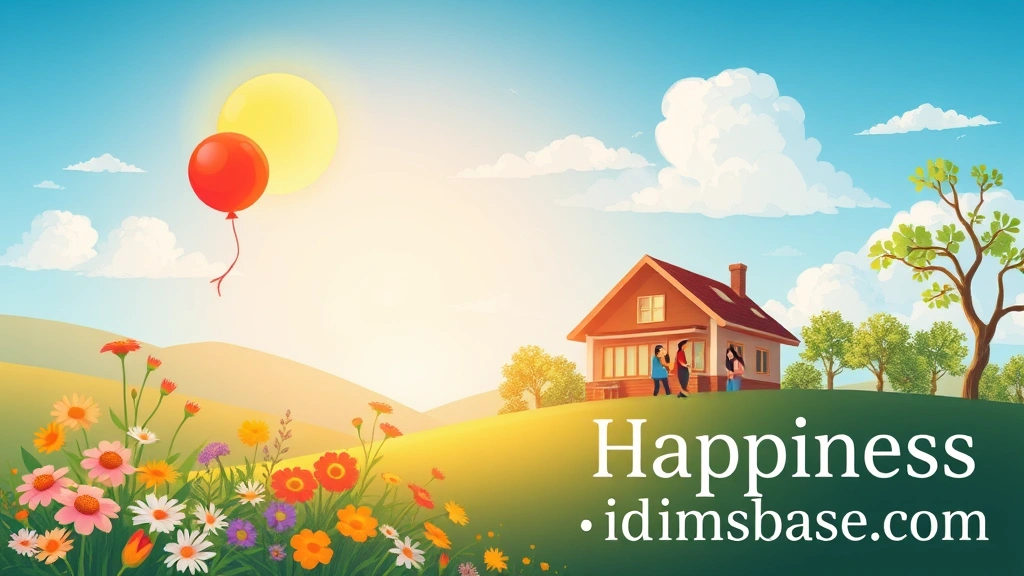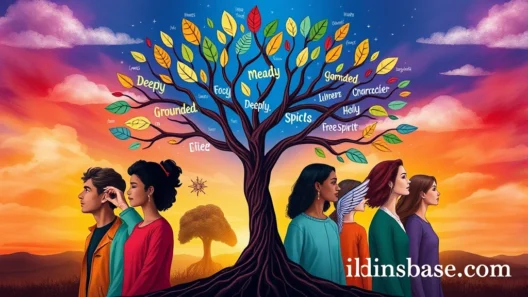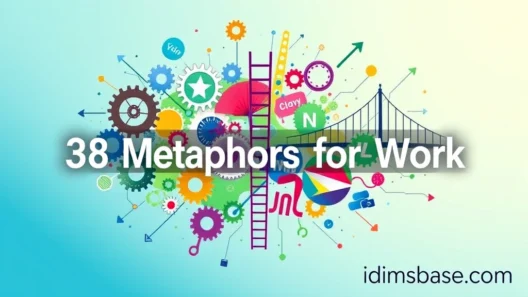What is happiness, really? It's one of those beautiful, elusive feelings we all chase, isn't it? We talk about it, dream about it, and sometimes, if we're lucky, we even feel it. But how do you describe something so vast, so personal, so wonderfully complex? That's where metaphors come in! They help us paint a picture with words, giving shape to abstract feelings.
Imagine trying to explain the taste of chocolate to someone who's never had it. You might say it's "like a warm hug" or "a symphony on your tongue." Metaphors do the same for happiness. They connect that joyful feeling to something tangible, something you can almost see, touch, or hear. Let's dive into 38 delightful metaphors that capture the essence of happiness in all its glorious forms!
38 Metaphors for Happiness
Get ready to explore a world of warmth, light, and pure joy! Each of these metaphors offers a unique lens through which to view that wonderful state we call happiness.
-
Happiness is a warm blanket.
It wraps around you, comforting and cozy, making everything feel safe and right. -
Happiness is a sunbeam.
It breaks through the clouds, bringing light and warmth to your day, chasing away shadows. -
Happiness is a gentle breeze.
It's light, refreshing, and lifts your spirits, making you feel free and unburdened. -
Happiness is a blooming flower.
It unfurls slowly, revealing beauty and fragrance, a testament to growth and life. -
Happiness is a bright spark.
It ignites within you, a sudden flash of joy that can grow into a roaring flame. -
Happiness is a bubbling brook.
It flows freely, with a cheerful sound, bringing life and refreshment wherever it goes. -
Happiness is a sweet melody.
It plays in your heart, a harmonious tune that makes you want to dance. -
Happiness is a golden key.
It unlocks doors to new possibilities, adventures, and inner peace. -
Happiness is a quiet harbor.
It's a safe place where your soul can rest, calm and protected from life's storms. -
Happiness is a clear sky.
It's boundless, open, and full of possibility, with no clouds to dim your view. -
Happiness is a well-oiled machine.
Everything works smoothly, effortlessly, and efficiently, bringing a sense of flow. -
Happiness is a child's laughter.
It's pure, infectious, and full of unadulterated joy that brightens any room. -
Happiness is a full sail.
It catches the wind, propelling you forward with purpose and excitement. -
Happiness is a homecoming.
It's the feeling of belonging, of finally being where you're meant to be. -
Happiness is a hidden treasure.
You might have to search for it, but once found, it's incredibly valuable and enriching. -
Happiness is a rising tide.
It lifts all boats, elevating every aspect of your life and those around you.

-
Happiness is a gentle rain.
It nourishes the soul, washing away worries and bringing fresh growth. -
Happiness is a painter's palette.
It's full of vibrant colors, ready to create a masterpiece of your day. -
Happiness is a secret garden.
It's a personal sanctuary, a beautiful place you cultivate within yourself. -
Happiness is a light in the darkness.
It guides you, offers hope, and illuminates your path forward. -
Happiness is a feather.
It's light, buoyant, and allows you to float above worries. -
Happiness is a soft pillow.
It provides comfort and rest for your mind, allowing you to relax deeply. -
Happiness is a flowing river.
It constantly moves forward, adapting, and finding its way around obstacles. -
Happiness is a warm embrace.
It's comforting, reassuring, and makes you feel loved and accepted.
-
Happiness is a harvest.
It's the reward for your efforts, the abundance reaped after hard work. -
Happiness is a compass.
It points you in the right direction, guiding you towards what truly matters. -
Happiness is a sunrise.
It's a fresh start, a new beginning filled with hope and possibility. -
Happiness is a campfire.
It brings people together, offering warmth, light, and a sense of community. -
Happiness is a blooming desert.
It’s unexpected, vibrant, and beautiful, appearing even in the most unlikely places. -
Happiness is a deep breath.
It's a moment of calm, a release of tension, and a centering of your being. -
Happiness is a child's drawing.
It's simple, pure, and full of uninhibited creativity and joy. -
Happiness is a sturdy anchor.
It keeps you grounded and stable, even when life gets turbulent.

-
Happiness is a perfect wave.
It's exhilarating, thrilling, and a moment of pure balance and flow. -
Happiness is a soft hum.
It's a gentle vibration of contentment that resonates within you. -
Happiness is a well-fed fire.
It burns brightly, sustained by positive energy and experiences. -
Happiness is a symphony orchestra.
All the different parts of your life come together in perfect harmony, creating something beautiful. -
Happiness is a playful puppy.
It's full of boundless energy, enthusiasm, and unconditional affection. -
Happiness is a gentle current.
It carries you along effortlessly, making your journey smooth and peaceful.
Why Do We Use Metaphors for Happiness?
You might be wondering, why go through all this trouble to describe a feeling? Well, metaphors are more than just fancy words. They're powerful tools that help us connect, understand, and even feel emotions more deeply.
Bridging the Abstract and Concrete
Happiness is an abstract concept. You can't touch it, smell it, or see it in the same way you can a table or a tree. Metaphors give it a tangible form. When you say "happiness is a sunbeam," you immediately picture warmth, light, and a sense of cheer. This makes the feeling more relatable and easier to grasp.
Enhancing Emotional Connection
By linking happiness to familiar objects or experiences, metaphors evoke emotions and sensations. "Happiness is a warm blanket" doesn't just describe a feeling; it makes you feel cozy and secure just by reading it. This deepens your emotional connection to the concept.
Aiding Communication and Sharing
Imagine trying to explain your joy to a friend. Saying "I'm happy" is fine, but saying "My happiness is a bubbling brook today" paints a much more vivid picture. It allows others to better understand your inner world and share in your experience.
Fostering Creativity and Perspective
Metaphors encourage us to think outside the box. They invite us to see happiness from different angles, discovering new facets and meanings. This creative exploration can even help us identify and appreciate moments of happiness in our own lives that we might have otherwise overlooked.

Key Takeaways
So, what have we learned from our journey through these wonderful metaphors?
- Happiness is diverse: It's not just one feeling; it's a spectrum of sensations, from quiet contentment to exhilarating joy.
- Metaphors make happiness tangible: They help us understand and relate to this abstract emotion by connecting it to concrete experiences.
- Language shapes our understanding: The words we use to describe happiness can deepen our appreciation for it and help us recognize it more often.
- Everyone's happiness is unique: While these metaphors offer common ground, your personal experience of happiness will always be your own beautiful blend.
Frequently Asked Questions (FAQ)
You've got questions, and we've got answers! Let's explore some common curiosities about happiness and its metaphors.
Q1: What is the main purpose of using metaphors for happiness?
The main purpose is to make the abstract concept of happiness more concrete and understandable. Metaphors allow us to describe happiness in vivid, relatable terms by comparing it to something tangible or familiar, enhancing emotional connection and communication.
Q2: Can metaphors actually help me feel happier?
Yes, they can! By using metaphors, you engage your imagination and evoke sensations associated with positive experiences. For example, visualizing "happiness as a warm blanket" can trigger feelings of comfort and security. This can shift your mindset and help you appreciate moments of joy more deeply.
Q3: Are there any negative metaphors for happiness?
While our list focuses on positive metaphors, the absence of happiness can certainly be described with negative metaphors (e.g., "sadness is a dark cloud"). However, happiness itself is generally portrayed as a positive state, so its metaphors tend to reflect light, warmth, and growth.
Q4: How can I use these metaphors in my daily life?
You can use them in several ways!
- Journaling: Describe your happy moments using a metaphor. "Today, my happiness was a gentle current."
- Conversation: Share your feelings with friends and family using these vivid descriptions.
- Mindfulness: When you feel happy, try to identify what metaphor best fits that specific feeling. This can deepen your awareness of your emotions.
- Creative Writing: Incorporate these metaphors into poems, stories, or songs.
Q5: Is there a universal metaphor for happiness?
Not really! Happiness is such a personal experience, and what resonates with one person might not with another. The beauty of having so many metaphors is that there's likely one that perfectly captures your unique feeling of joy at any given moment. This diversity allows for a richer and more inclusive understanding of happiness across different cultures and individual experiences.
Q6: Can metaphors about happiness change over time for an individual?
Absolutely! As you grow and experience new things, your understanding and experience of happiness can evolve. A metaphor that perfectly described your happiness in childhood might shift as you enter adulthood, get married, or pursue new passions. It's a dynamic reflection of your journey.
Q7: How do metaphors differ from similes when describing happiness?
The difference is subtle but important!
- Metaphor: States that one thing is another. "Happiness is a sunbeam." (Direct comparison)
- Simile: States that one thing is like or as another. "Happiness is like a warm blanket." (Indirect comparison, using "like" or "as")
Both are powerful tools for description, but metaphors offer a more direct and often more poetic connection.
Conclusion
Isn't it fascinating how many ways there are to describe that wonderful feeling we call happiness? From sunbeams to warm blankets, from bubbling brooks to secret gardens, each metaphor offers a unique glimpse into the heart of joy. Using these vivid descriptions doesn't just make our language richer; it helps us connect more deeply with the emotion itself, making it more tangible and real.
So, the next time you feel a surge of joy, take a moment. What metaphor comes to mind for your happiness? Is it a light breeze, a golden key, or perhaps a perfect wave? Embrace the beauty of these comparisons, and let them illuminate the many wonderful ways happiness shows up in your life. Keep exploring, keep feeling, and keep finding your own beautiful ways to describe the indescribable!






